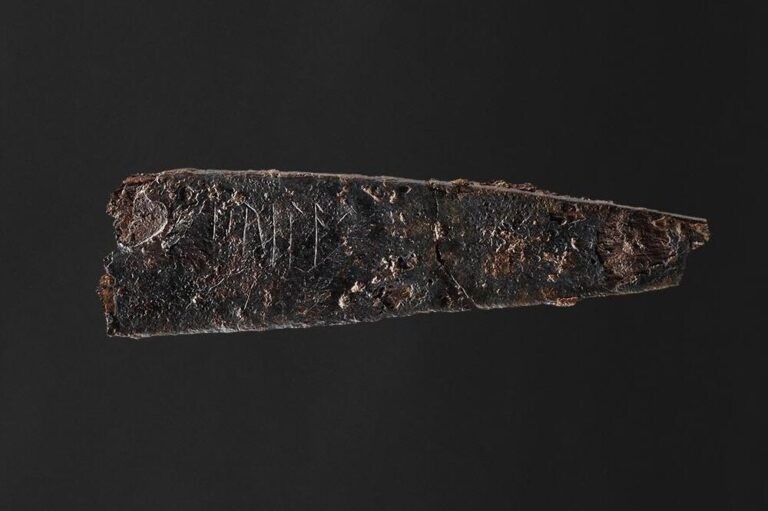Archaeologists from the Museum Odense in Denmark have discovered an almost 2,000-year-old knife engraved with what is believed to be the oldest physical example of runes within the country, reports The Guardian.

Insights Into the Development of Early Scandinavian Language
The runic inscription, alphabet of Denmark's earliest written language, was carved into the 3-inch long knife. The artifact itself was dug up from a grave located underneath an urn around Odense, a city on the island of Funen.
The five "letters" accented by three grooves only measured a mere 0.19 inches tall and spell out the word "hirila," which translates into "little sword" from Old Norse. Upon dating, the researchers at the institution found out that the knife goes as far back as 150 AD.
Alongside another archaeological find, a bone comb unearthed in 1865 with a similar-looking inscription, they are considered to be the oldest runes ever discovered in the country.
According to Jakob Bonde, the museum archaeologist who found the knife, upon his initial inspection he thought that it was a run-of-the-mill knife because the runes were obstructed by dirt and other material.
However, after it was cleansed by conservators, the runic inscriptions were very apparent to Bonde and his colleagues, especially the word that it spelled out.
"It's an extraordinary find for us and it says something about the development of the earliest Scandinavian language," he said.
Read also: From the Qin Dynasty to Arsenic: the Expansive and Surprisingly Lethal History of Wallpaper
New Clues About Early Danish History
Nothing is known about the owner of the knife, besides the educated guess that they're likely an individual with a high status in society at that time. Even the runes don't refer to the owner, as it only references the knife itself.
As per Bonde, the theory about the knife's owner is supported by the fact that the Danish people within that period "had a lot of connection with the Romans," and that the individuals with a higher standing would typically try "to look Roman."
"Everything Roman was very in," he explained.
As for the knife, it will be exhibited at Museum Odense's Møntergaarden on Feb. 2 alongside other discovered artifacts found at the excavation site.
Lisbeth Imer, a rune researcher from Denmark's National Museum, said that this recent finding will be instrumental in revealing more about early Danish history, especially because discoveries of inscriptions as old as this one are "incredibly rare."
"In the early days of runic history, those able to write constituted a small intellectual elite, and the first traces of such people is to be found on Funen," she added.